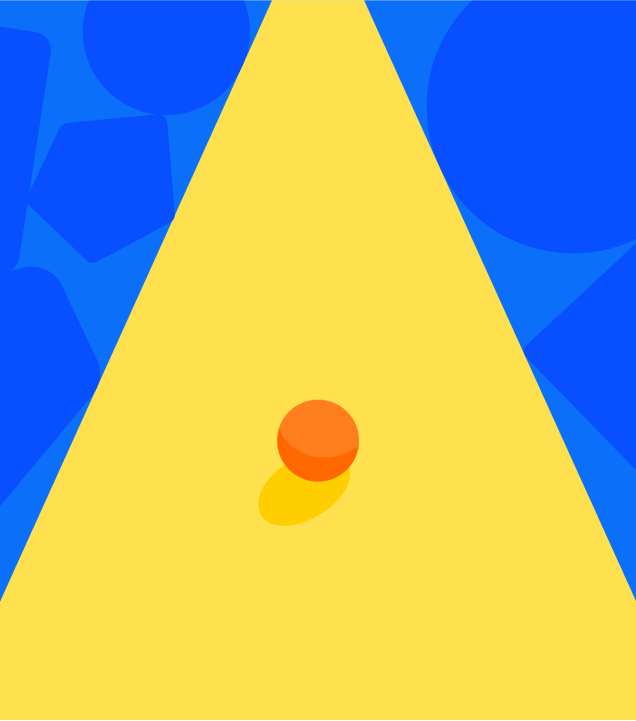How to meditate
Researched and written by our mindfulness and meditation experts | Learn more
Oct 10, 2023
Perhaps you’re ready to begin a meditation practice and experience the many benefits it has to offer. But there may be one issue: You might not know how to start meditating. With so many different meditation techniques and traditions to try, it’s natural to feel overwhelmed, confused, or even silly at first. But meditation doesn’t have to be daunting. Whether you’re brand new or haven’t practiced in a long time, here’s everything you need to know about how to meditate.
How meditation works
How It Works
1 min
Meditation basics
Most meditations begin by sitting in a quiet place, closing the eyes, calming the mind, and focusing on the breath. But there’s more to meditating than sitting quietly and breathing. When we meditate, we are essentially cultivating awareness and compassion; we are training the mind to stop being easily distracted and instead be more focused in the present moment. Using the breath as our anchor in the moment, we simply sit and gradually learn to let thoughts and feelings come and go.
Of course, it’s completely normal when we start to meditate for the mind to jump all over the place. The mind’s nature is to think, so it’s going to think — meditation is not about stopping thoughts. We sit and practice to observe our thinking without getting caught up in our thoughts and emotions. We learn to tame this restlessness by developing an awareness for those moments when our attention has wandered off. Each time we notice we’re distracted, we build our awareness, and we bring our attention back to the breath. Through the process of meditation, the mind becomes more comfortable with this idea of sitting still, and we can begin to learn how to integrate the qualities experienced during meditation practice — calmness, focus, compassion, mindfulness — into the rest of our day.
How to start meditating
Learning how to meditate is a fairly straightforward process, especially if you’re able to follow these simple steps:
Step 1: Decide on a time and place that works for you.
Research shows that it’s easiest to create a new habit when we do it at the “same time, same place” every day. Just don’t overthink it: The best time to meditate is really whenever you can best prioritize it. And the best place to meditate? Wherever you can be comfortable and minimally distracted.
Step 2: Decide on an amount of time to meditate.
Particularly for beginners, starting with small, manageable chunks of time — for example, 3-, 5-, or 10-minute sessions — is key, so you can build up your practice and find your sweet spot. The most important thing is to decide on an amount of time that is effective, but also feels achievable so you continue to show up day after day.
Step 3: Make sure you’re sitting comfortably.
Sit with your legs and arms uncrossed, feet flat on the floor, and hands resting on your lap or by your side. Keep your back straight, but not too tense. If you need it, a small cushion or rolled up towel can help keep your back straight.
Step 4: Decide whether you want the meditation to be guided or unguided.
A guided meditation is led by an experienced teacher — either in person at a meditation group or class, or via audio or video as in the Headspace app. Guided meditation is recommended for people who are learning how to meditate. Most guided meditations follow a similar format: the teacher explains how the mind behaves during meditation, leads you through a particular meditation technique, and finishes by suggesting how to integrate this technique into your everyday life.
Simple meditation for beginners
The body scan technique can be a great introduction for people who are learning how to meditate. It’s designed to sync the body and mind by performing mental scans, from the top of your head to the end of your toes.
Here’s how to do the meditation technique:
-
With your eyes closed, start at the top of the head and mentally scan all the way down your body.
-
As you scan, notice which parts feel relaxed or tense, comfortable or uncomfortable, light or heavy.
-
Perform the scan again and again (each scan should take about 20 seconds) and use these observations to build a mental picture of how your body feels right now, in the present moment.
-
When thoughts arise, simply return to the area of the body where you last left off.
-
Once you’ve practiced this technique and start feeling comfortable with it, try this more in-depth body scan meditation.

How to make sure you continue meditating
Showing up for meditation day after day is essential. But how can you maintain a consistent practice with so many distractions and competing priorities? It may surprise you to learn that when it comes to meditation, frequency is more important than duration. In other words, meditating for 10 minutes a day, 7 days a week, is more beneficial than 70 minutes one day a week.
This “slow and steady” approach to building a regular practice allows your brain to learn at its own pace how to be open and present and how to extend that awareness into your everyday life. Moreover, if we are focused on maintaining a regular, consistent, manageable practice, we won’t become distracted from worrying about our progress or have to stop because we’ve overexerted ourselves.
Another thing that happens when we continue to show up for meditation day after day, is that we become increasingly more confident in the process. And, that confidence can be key on the days when meditation feels particularly challenging or difficult (it will happen). The more we meditate, the more we’re able to better understand what kind of approach is required each day. As we become more stable in our practice, we come to accept that on some days we may experience a relatively effortless practice; on other days, more effort is required. Whatever it takes, we are okay with that.
How to start meditating with Headspace
When you’re ready, press play on Headspace’s 10-day beginner’s course on mindfulness basics — available with your membership or free trial. Jump into your new practice with the essentials. From there, once you gain more experience and confidence, you can explore the whole library of content, featuring hundreds of themed mindfulness meditations on everything from stress and compassion to sleep and focus.
Be kind to your mind. Start with a free trial of Headspace.
READ NEXT: The benefits of daily meditation


Be kind to your mind
- Access the full library of 500+ meditations on everything from stress, to resilience, to compassion
- Put your mind to bed with sleep sounds, music, and wind-down exercises
- Make mindfulness a part of your daily routine with tension-releasing workouts, relaxing yoga, Focus music playlists, and more

Learn more about meditation

Stay in the loop
Be the first to get updates on our latest content, special offers, and new features.
By signing up, you’re agreeing to receive marketing emails from Headspace. You can unsubscribe at any time. For more details, check out our Privacy Policy.
- © 2025 Headspace Inc.
- Terms & conditions
- Privacy policy
- Consumer Health Data
- Your privacy choices
- CA Privacy Notice







